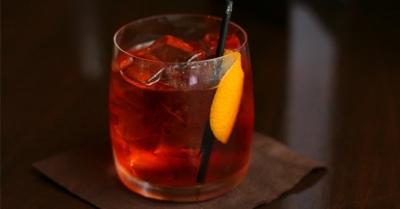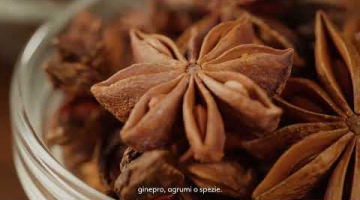“The beautiful thing about both these cocktails is that they’re packed with booze,” Benjamin Zorn, general manager and beverage director at Williamsburg, Brooklyn’s Bourbon Springs, says. He's giving me his take on why the Negroni has surged in popularity while its cousin, the Boulevardier, has languished. Are cocktail menus simply not big enough for both of these bitter tipples, despite each guaranteeing a delicious buzz? It’s a complicated question whose answer seems to lie in cocktail history, travel patterns, and the palates of seriousbourbon drinkers.
The Negroni — a blend of equal parts gin, sweet vermouth, and Campari, garnished with an orange peel — was born in Italy. It’s a boozier play on the Americano, and both are relatives of the Manhattan. The Boulevardier, which puts bourbon or rye whiskey in place of gin, was, according to Serious Eats, first noted in Harry MacElhone’s 1927 volume Barflies and Cocktails. Despite its similar profile and how easy it is to make, it has never quite broken out the way the Negroni has, despite its champions.
“The major thing is that Campari is such a fierce animal,” explains one such champion, bartender Jordan Felix of Portland, Oregon’s Multnomah Whiskey Library. “It definitely takes over a lot of those softer, more floral whiskeys, and I think a lot of people mix up those flavors.”
Zorn suggests the Negroni is the more popular go-to drink for several reasons, the first of which is that bourbon drinkers just want to drink that spirit by itself, while gin drinkers are more apt to go for a cocktail. There’s also the fact that touring Italy gives Americans, who generally steer clear of bitter flavors, a taste for the Negroni, while “it takes a bartender to dig up the Boulevardier.” Both have their moments, though, he says: “The gin is lighter. If you’re in a ‘world is getting me down’ mood, go for the bourbon.”
“I think of the Negroni more as a strong aperitivo, waking up the palate,” Felix says. “The Boulevardier is more of a digestivo—its earthy quality is particularly good after eating food or midway through the night. I feel like it’s a sturdier drink.”
There are more variations on the Negroni on cocktail menus, though. You can’t throw a rock in Brooklyn without hitting a bar serving up a frozen one, at places such as The Narrows in Bushwick or Lake Street in Greenpoint, and at Crown Heights’ Tooker Alley, they add the locally made Sorel liqueur in homage to the neighborhood’s Caribbean heritage.
The Boulevardier, on the other hand, is a far more special case. Working at the Whiskey Library means Felix sees them ordered fairly frequently, likely owing to his knowledge of its somewhat delicate nature. “When they developed the recipe at Harry’s New York Bar inParis, Canadian Club was the whiskey of choice and it’s extremely soft,” he says. At the Library, Willett bourbon or rye are the whiskeys of choice.
Whichever you choose, you’re likely to get a good one. According to Zorn, “because it’s three ingredients, even if your bartender has no skill, they can make it.” But with more thought as to the nuance of the spirits, Felix says, they can be the mark of a bartender truly worth his or her salt: “If they can make a three-ingredient drink sing more than an eight-part, then they’re really thinking about the flavors they’re putting into it.”
thanks to:https://talesofthecocktail.com/behind-bar/bitter-rivals-boulevardier-ver...
















